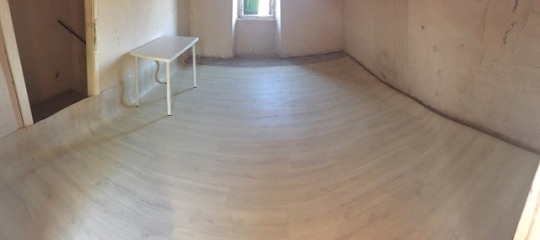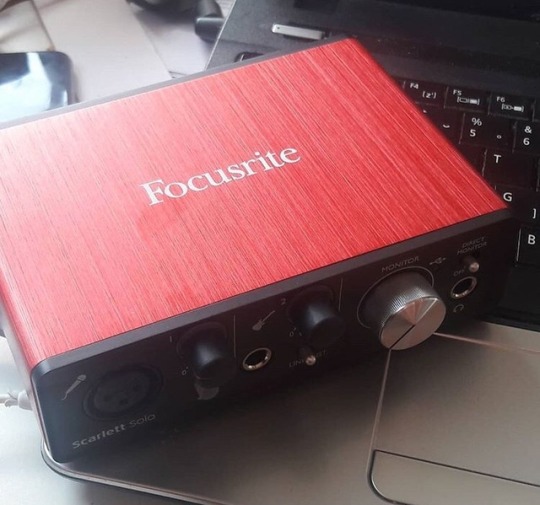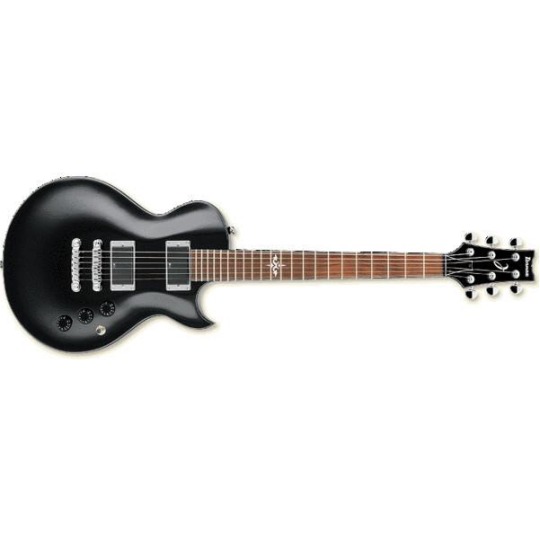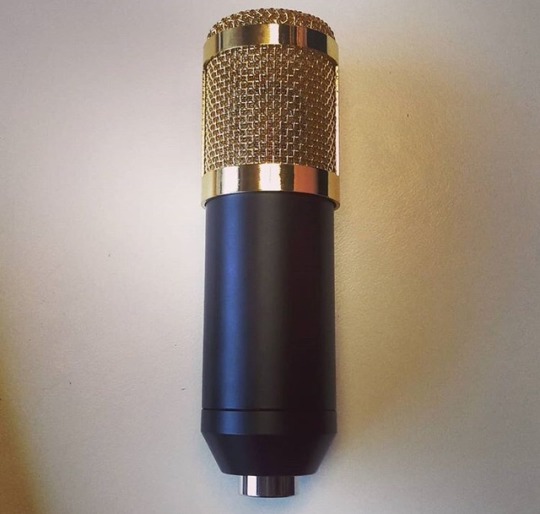Don't wanna be here? Send us removal request.
Text
How to build your very own home studio for rock & metal music for under $2000
Hey all, I am localistvocalist! These days I’m re-assembling my small room studio in a new space. I like to call it a “quiet” studio, because everything is recorded directly in the box. Of course, vocals are the only thing being “loud”. Since I’ve been basically finding my own way to make my own little studio, I decided to make this post to help you create and build your very own studio. Note that my picks for a studio might not be applicable to you, as I’m primarily a rock and metal musician, some of these will not apply to a, say, house or trap musician. Let’s get started!
0. Space - You can’t make a studio without a room and space to create it! You need enough room for a desk, a chair, a guitar, a mic stand, and enough space to move around comfortably. Below is my room that is currently being fixed up, and there is plenty of space! I even decided to save a little space by ordering guitar wall mounts, so they don’t take up floor space.

1. Laptop - I have a dank piece of junk in a form of a 5 year old Acer on the lower-mid end of the spectrum. It cost $500 when I bought it, it’s beaten down and used as fuck, but it does the job to a fair extent. And you can’t really record anything without a laptop or a PC, right? Ideally you want to invest about $500-$600 building a PC, preferably a desktop version. But make do with what you got. A laptop will do home studio tasks well enough.
2. Audio Interface - An audio interface. How to record anything in good quality without one? I opted in for a budget option of a Focusrite Scarlett Solo 2nd gen. It set me back about $120, and it has 2 inputs. A mic one, and an instrument one. It’s surprisingly versatile for such a small piece, and I’d always recommend it to any budget built studio. It’s small, compact, well built, and sturdy. You can literally fit it anywhere, making mobility a plus, at least for me, as I carry my recording stuff with me for some sessions out of my home studio.

3. 2 speaker monitors - Need I explain? This is how you hear what you’re working with. It’s basically a must, and you can find a solid pair for under $100 these days. They’re great for listening to music, playing along to backing tracks, hearing what you’re supposed to hear, and they make mixing a breeze.
4. A DAW - A Digital Audio Workstation. A program into which you record, alter, edit, and mix all you recorded. I opted for FLStudio as I’ve been using it for a while before and I know my way around it. You can opt for Reaper, Cubase, and so many more. Find the one you’re most comfortable with. I whileheartely suggest you play with a few that are avaliable to you and find the one you find yourself most comfortable with. You don’t want to be stuck at finding how to set which input to record, right?
5. An electric guitar - no rock or metal song is complete without a guitar. I’m currently using my Ibanez ART series 120. I also sometimes use my drummers guitar which is a Gibson SG of some sort, or my lead guitarists Prestige Strat for a classic strat sound. Find a guitar that suits your needs best. If you’re into heavier metal, you might want to look into Jacksons and Schecters, or maybe a 7-string guitar. For classic rock you want to search for Strats and Telecasters, for hard rock, a Gibson or a PRS will do you good. As long as you find a guitar with a sound, feel, and tone that you like and/or need, you will be set to go. Myself, I’m currently in the process of saving money for a new Schecter Hellraiser C-1 with a Floyd Rose. A metal guitar with a rather different build than my Ibanez, which serves a different purpose, but is still able to deliver a variety of sounds. A solid mid-high tier studio guitar should set you back about $600-$1000 bucks, but if you have any guitar, it will do the job just fine, as long as it’s not cardboard trash!

6. 2 mics - one dynamic, one condenser - I stand by having at least 1 mic of each kind. For now I only need one of each. A condenser for acoustic guitar, percussion, and some vocals, and a dynamic for recording most vocals, micing guitar amps, and for getting a drum sound. I opted in for an SM57 for my dynamic, and I currently use a Neewer NW800 condenser, which I’ll be replacing soon. All in all, I’m willing to set aside $200-$300 for a pair of mics, as long as I know they will serve the purpose.


7. A mic stand - I have 2. One tabletop, and one full sized. Tabletop mostly for recording videos such as this one, and a full sized for recording vocals, drums, and micing guitar amps. It’s a rather small investment, but it is worth it. Bonus points for it keeping your hands off the mic!! Along with a stand you should invest in a pop filter. It makes a big difference with plosive sounds, especially during singing and screaming. This should set you back about $30-$50 in total.
8. Plugins - I use several plugins for my songs. Most notably Pitcher, Drum sounds pack, Hardcore, and Emissary amp sim. Most of them are free, but they really bring your shit to the next level. Whether you need various effects, different cabinets, a little pitch correction, or just a bit more oomph, you will always be able to find free plugins and effects.
9. Optional:
• Bass guitar - As a rock and metal musician I appreciate a good bass track, and let’s be honest, midi sequenced bass tracks just aren’t as good as a proper bass track. A bass guitar won’t set you back much, as you’re looking at $200-$300 buck for a mid tier one, but it can bring a lot of feel and heaviness to your rock and metal tracks.
• A guitar amp (pros and cons) - I have a 30 watt Laney with inbuilt reverb and 2 different distortion modes. I use it for band practices and recording tracks, and I must say, recording an amp’d guitar compared to recording a guitar through an amp simulator is a big difference. There is something about the energy and livelihood of the track that just gets so much better with a mic’d amp. However, sometimes you can’t mic an amp, like I can’t here, but if possible I’d wholeheartedly recommend it. This amp sets you back $130, but you’re free to spend more for a higher quality amp such as a Marshall.
• Alternate electric guitars - I know I said about this earlier, but I for one want to have a few guitars. Namely the Ibanez I own now, the Schecter, a 7 string Schecter, a hollow body one, a Telecaster and a Stratocaster, in addition to an acoustic guitar. Why the hell would you need that many?! Well, various sounds, uses, and tones of course. It’s not necessary, but it is an aspiration of mine, as different tones fit different genres. Imagine playing Eric Clapton with a 7 string Schecter or playing Avenged Sevenfold with a hollow body guitar. Yeah, I believe you can already tell that won’t work. So if you really need to get different sounds for your songs, a second, or even a third guitar, aren’t off limits.
• MIDI keyboard - even for rock, it’s always nice to have a MIDI keyboard. Of course it’s not a MUST, but it’s a nice addition. Whether there is a piano part or just drums to write, it’s super convenient. You can use it to make MIDI sequences of piano, syths, and even drum tracks, and honestly, makes the whole process of writing MIDI tracks much more fun and less time consuming.
• Mixer - some people swear by it, some say it’s unnecessary. You don’t need it, but if you have one, it’s a solid addition, specifically if you are micing drums or have multiple vocals in your band.
There we go. That’s my list of things you basically MUST have to have a quality home studio for rock and metal music. Make sure to follow me, as I’ll be posting a lot more content like this in days to come! You can message me and suggest some content you’d like to see as well!
LocalistVocalist
#rock#metal#grunge#music#musician#studio#budget#neewer#focusrite#ibanez#schecter#guitar#laptop#drums#bass#punk#hard rock#guitarist#bassist#singer#drummer#list#buy
1 note
·
View note